.raw
Type of resources
Topics
Keywords
Contact for the resource
Provided by
Years
Formats
Update frequencies
Scale
-

The datasets contain 40 time-resolved segmented X-ray micro-tomographic images showing mineral dissolution of carbonate rock samples containing dolomite and calcite via CO2 acidified brine fluid flow at reservoir conditions. The tomographic images were acquired at a voxel-resolution of 5.2 µm and time-resolution of 33 minutes. The data were collected with lab based microCT, with an aim of investigating the influences of rock mineral and physical heterogeneity on dissolution patterns and changes to dynamic rock properties at the pore-scale. Further details of the experimental methodology can be found in Al-Khulaifi et al. (2019). These time-resolved tomographic images can be used to validate pore-scale multimineral reactive transport models.
-
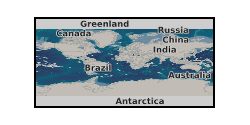
The datasets contain time-resolved synchrotron X-ray micro-tomographic images (grey-scale and segmented) of multiphase (brine-oil) fluid flow (during drainage and imbibition) in a carbonate rock sample at reservoir pressure conditions. The tomographic images were acquired at a voxel-resolution of 3.28 µm and time-resolution of 38 s. The data were collected at beamline I13 of Diamond Light Source, U.K., with the aim of investigating pore-scale processes during immiscible fluid displacement under a capillary-controlled flow regime. Understanding the pore-scale dynamics is important in many natural and industrial processes such as water infiltration in soils, oil recovery from reservoir rocks, geo-sequestration of supercritical CO2 to address global warming, and subsurface non-aqueous phase liquid contaminant transport. Further details of the sample preparation and fluid injection strategy can be found in Singh et al. (2017). These time-resolved tomographic images can be used for validating various pore-scale displacement models such as direct simulations, pore-network and neural network models, as well as for investigating flow mechanisms related to the displacement and trapping of the non-wetting phase in the pore space.
-
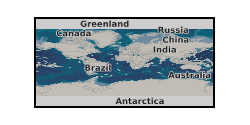
The datasets contain FIB-SEM and X-ray micro-tomographic images of a wettability-altered carbonate rock sample before and after dissolution with reactive CO2-saturated brine at reservoir pressure and temperature conditions. The data were acquired with the aim of investigating CO2 storage in depleted oil fields that have oil-wet or mixed-wet conditions. Our novel procedure of injecting oil after reactive transport has revealed previously unidentified (ghost) regions of partially-dissolved rock grains that were difficult to identify in X-ray tomographic images after dissolution from single fluid phase experiments. The details of image files and imaging parameters are described in readme file.
-
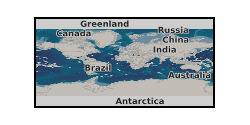
The datasets contain 416 time-resolved synchrotron X-ray micro-tomographic images (grey-scale and segmented) of multiphase (brine-oil) fluid flow in a carbonate rock sample at reservoir conditions. The tomographic images were acquired at a voxel-resolution of 3.28 µm and time-resolution of 38 s. The data were collected at beamline I13 of Diamond Light Source, U.K., with an aim of investigating pore-scale processes during immiscible fluid displacement under a capillary-controlled flow regime, which lead to the trapping of a non-wetting fluid in a permeable rock. Understanding the pore-scale dynamics is important in many natural and industrial processes such as water infiltration in soils, oil recovery from reservoir rocks, geo-sequestration of supercritical CO2 to address global warming, and subsurface non-aqueous phase liquid contaminant transport. Further details of the sample preparation and fluid injection strategy can be found in Singh et al. (2017). These time-resolved tomographic images can be used for validating various pore-scale displacement models such as direct simulations, pore-network and neural network models, as well as to investigate flow mechanisms related to the displacement and trapping of the non-wetting phase in the pore space.
-
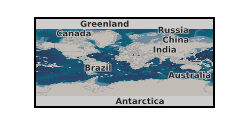
The images in this dataset are a sample of Ketton carbonate from a micro-computed tomography (micro-CT) scan acquired with a voxel resolution of 4.52 µm. This dataset is part of a study on the effects of Voxel Resolution in a study of flow in porous media. A brief overview of this study summarised from Shah et al 2015 follows. A fundamental understanding of flow in porous media at the pore-scale is necessary to be able to upscale average displacement processes from core to reservoir scale. The study of fluid flow in porous media at the pore-scale consists of two key procedures: Imaging reconstruction of three-dimensional (3D) pore space images; and modelling such as with single and two-phase flow simulations with Lattice-Boltzmann (LB) or Pore-Network (PN) Modelling. Here we analyse pore-scale results to predict petrophysical properties such as porosity, single phase permeability and multi-phase properties at different length scales. The fundamental issue is to understand the image resolution dependency of transport properties, in order to up-scale the flow physics from pore to core scale. Shah, S M, Gray, F, Crawshaw, J P, and Boek, E S. 2015. Micro-Computed Tomography pore-scale study of flow in porous media: Effect of Voxel Resolution. Advances in Water Resources July 2015 doi:10.1016/j.advwatres.2015.07.012
-
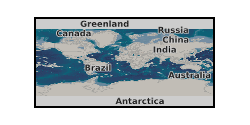
This dataset contains 10 three dimensional x-ray tomographic images of CO2-acidified brine reacting with Ketton limestone at a voxel size of 3.8 microns. It includes the unreconstructed projections (.txrm), the reconstructed images (.txm), and the masked and cropped segmented images (.am and .raw). The rock was imaged during dissolution 10 times over the course of 2.5 hours. Details can be found in Menke et al., 2015 in the journal Environmental Science and Technology.
-
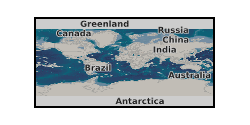
A laboratory µ-CT scanner was used to image the dissolution of Ketton, Estaillades, and Portland limestones in the presence of CO2-acidified brine at reservoir conditions (10 MPa and 50 °C) at two injected acid strengths for a period of 4 h. Each sample was scanned between 6 and 10 times at ~4 µm resolution and multiple effluent samples were extracted. See also paper: H.P. Menke et al. Geochimica et Cosmochimica Acta 204 (2017) 267-285. https://doi.org/10.1016/j.gca.2017.01.053.
-
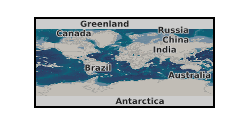
EPSRC grant EP/L012227/1: Development of Unified Experimental and Theoretical Approach to Predict Reactive Transport in Subsurface Porous Media. The effect of pore-scale heterogeneity on non-Darcy flow behaviour is investigated by means of direct flow simulations on 3-D images of Estaillades carbonate. The critical Reynolds number indicating the cessation of the creeping Darcy flow regime in Estaillades carbonate is two orders of magnitude smaller than in Bentheimer sandstone, and is three orders of magnitude smaller than in the beadpack. It is inferred from the examination of flow field features that the emergence of steady eddies in pore space of Estaillades at elevated fluid velocities accounts for the early transition away from the Darcy flow regime. Also available at https://www.digitalrocksportal.org/projects/10, DOI:10.17612/P73W2C. Further details can be found in Muljadi et al., Advances in Water Resources (2015), URL:http://dx.doi.org/10.1016/j.advwatres.2015.05.019.
-
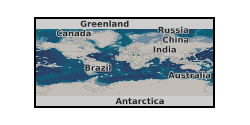
EPSRC grant EP/L012227/1: Development of Unified Experimental and Theoretical Approach to Predict Reactive Transport in Subsurface Porous Media. The effect of pore-scale heterogeneity on non-Darcy flow behaviour is investigated by means of direct flow simulations on 3-D images of Bentheimer sandstone and Estaillades carbonate. The critical Reynolds number indicating the cessation of the creeping Darcy flow regime in Estaillades carbonate is two orders of magnitude smaller than in Bentheimer sandstone, and is three orders of magnitude smaller than in the beadpack. Also available at https://www.digitalrocksportal.org/projects/11, DOI:10.17612/P77P49. Further details can be found in Bagus P. Muljadi, Martin J. Blunt, Ali Q. Raeini, Branko Bijeljic. The impact of porous media heterogeneity on non-Darcy flow behaviour from pore-scale simulation. Advances in Water Resources. 2015. http://dx.doi.org/10.1016/j.advwatres.2015.05.019.
-
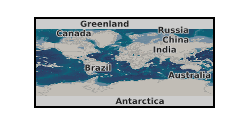
The datasets contain 5 stitched X-ray micro-tomographic images (grey-scale, doped, difference, segmented porespace and segmented micro-porespace with porespace) and 3 X-ray nano-tomographic images of a region of microporous porespace in Estaillades Limestone. The x-ray tomographic images were acquired at a voxel-resolution of 3.9676 µm using a Zeiss Versa XRM-510 flat-panel detector at 70 kV, 6W, and 85 µA with an exposure time of 0.037s and 64 frames. The X-ray nano-tomographic images were reconstructed using a proprietary filtered back projection algorithm from a set of 1601 projections, collected with the Zeiss Ultra 810 with 32nm voxel size using a 5.4keV energy quasi-monochromatic beam with an exposure time of 90s. The data was collected at Imperial College London and Zeiss Labs with the aim of investigating pore-scale microporosity in carbonates with a heterogenous pore structure. Understanding the effect of microporosity on flow is important in many natural and industrial processes such as contaminant transport, and geo-sequestration of supercritical CO2 to address global warming. These tomographic images can be used for validating various pore-scale flow models such as direct simulations, pore-network and neural network models for upscaling flow across scales.
 NERC Data Catalogue Service
NERC Data Catalogue Service